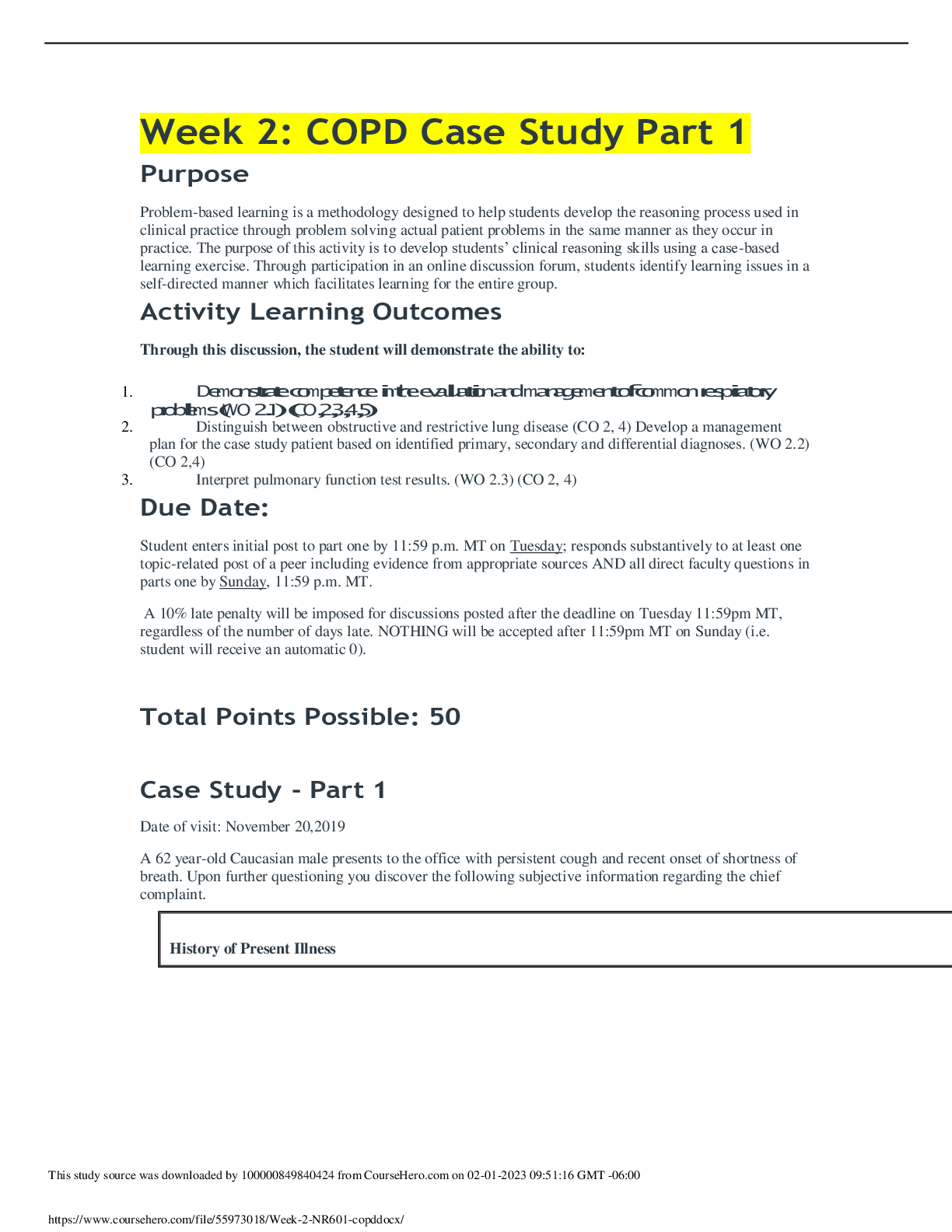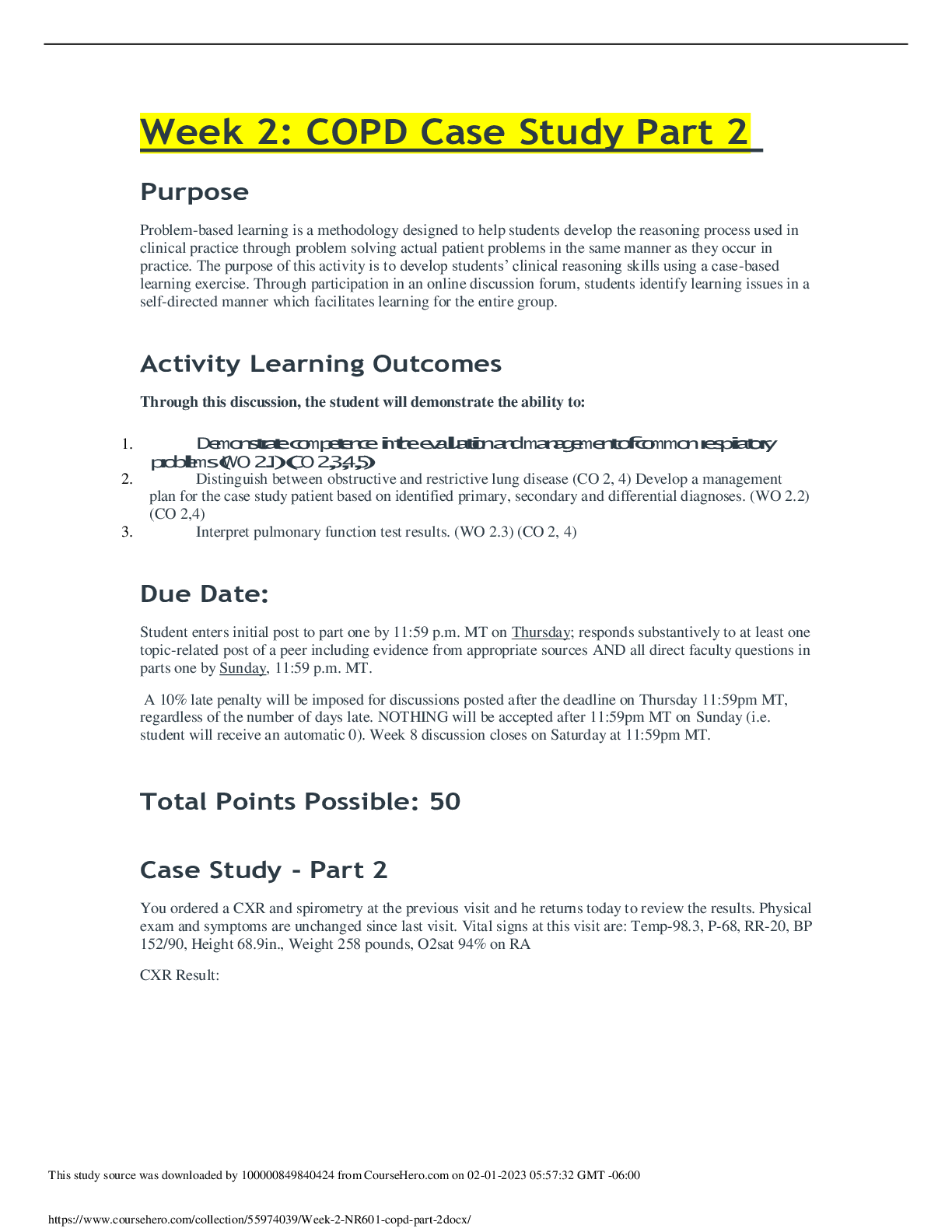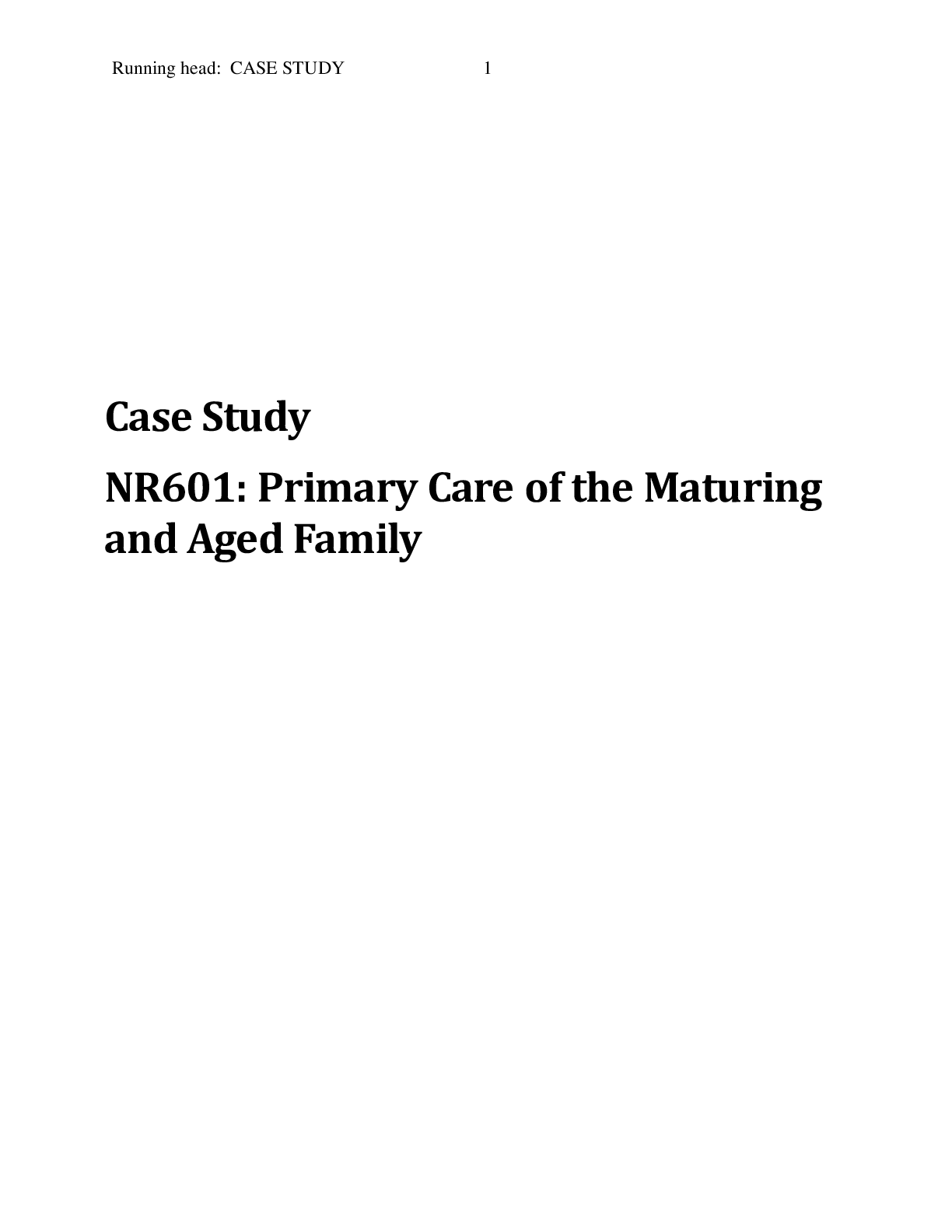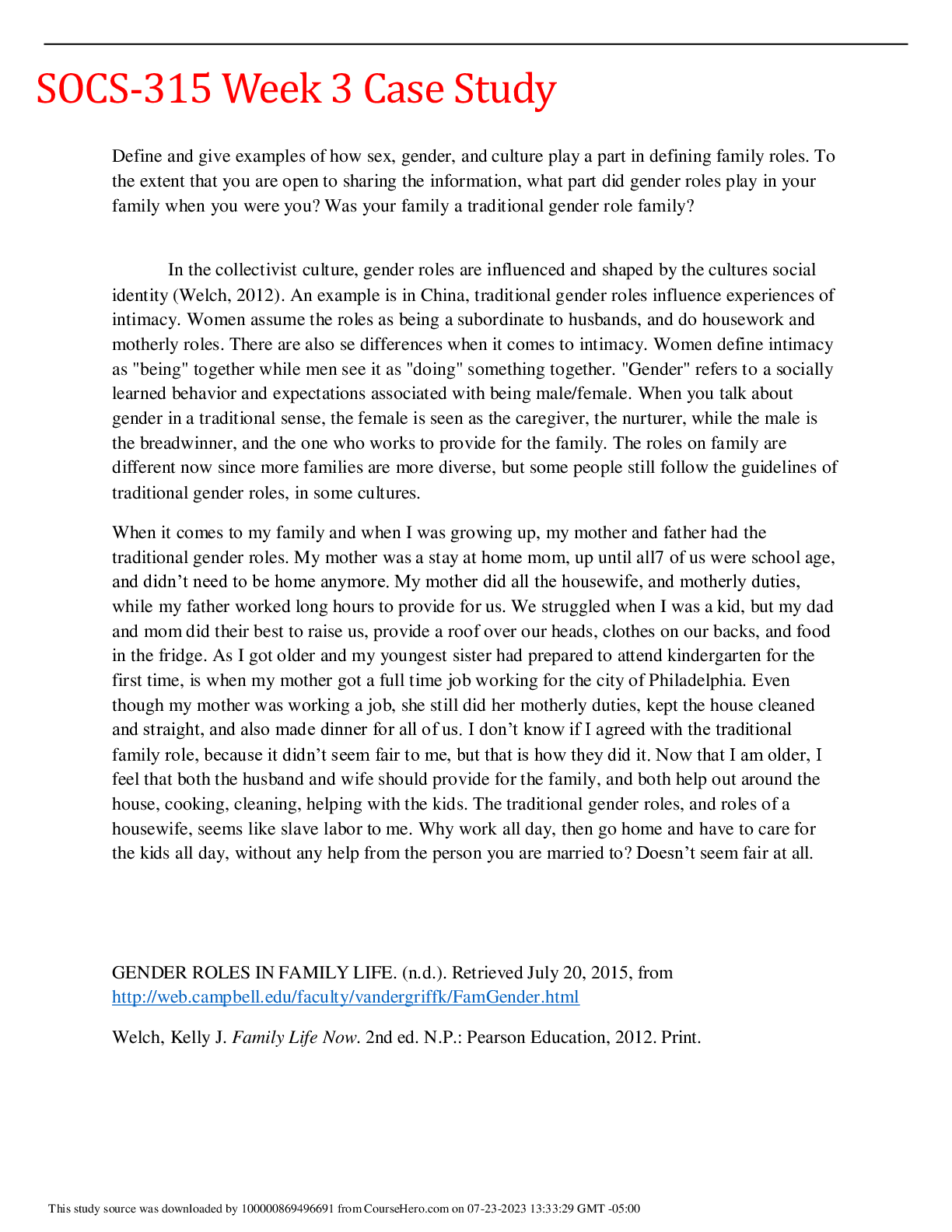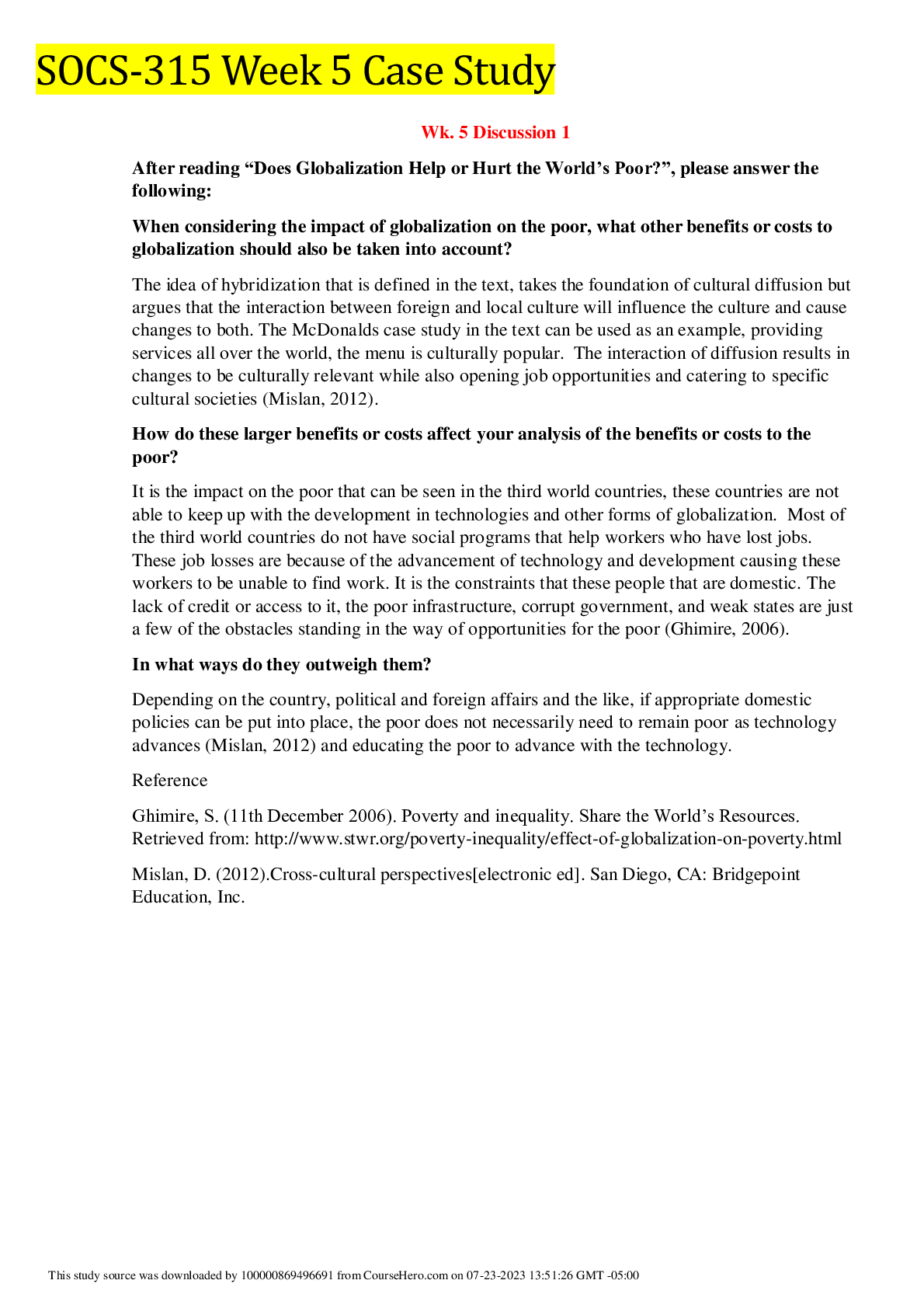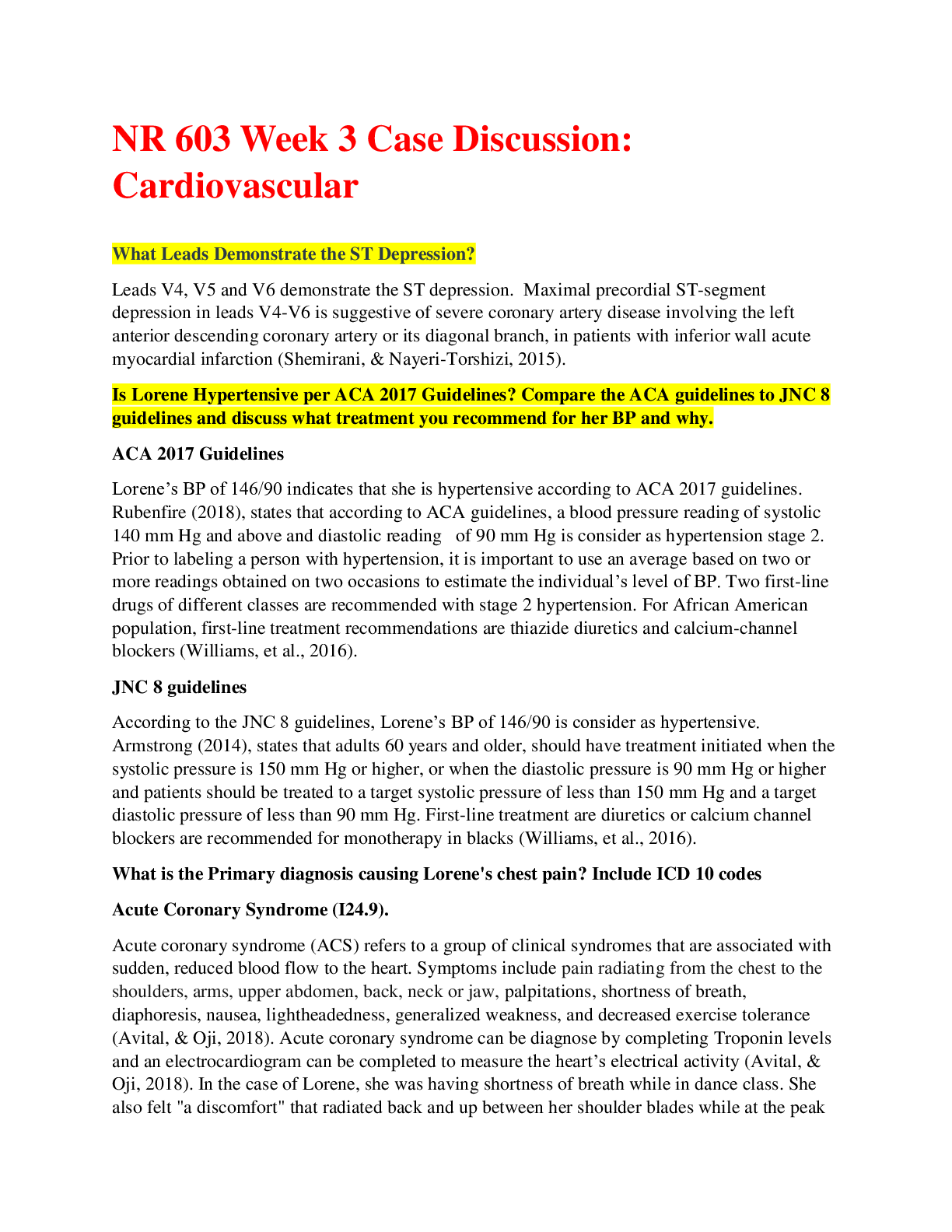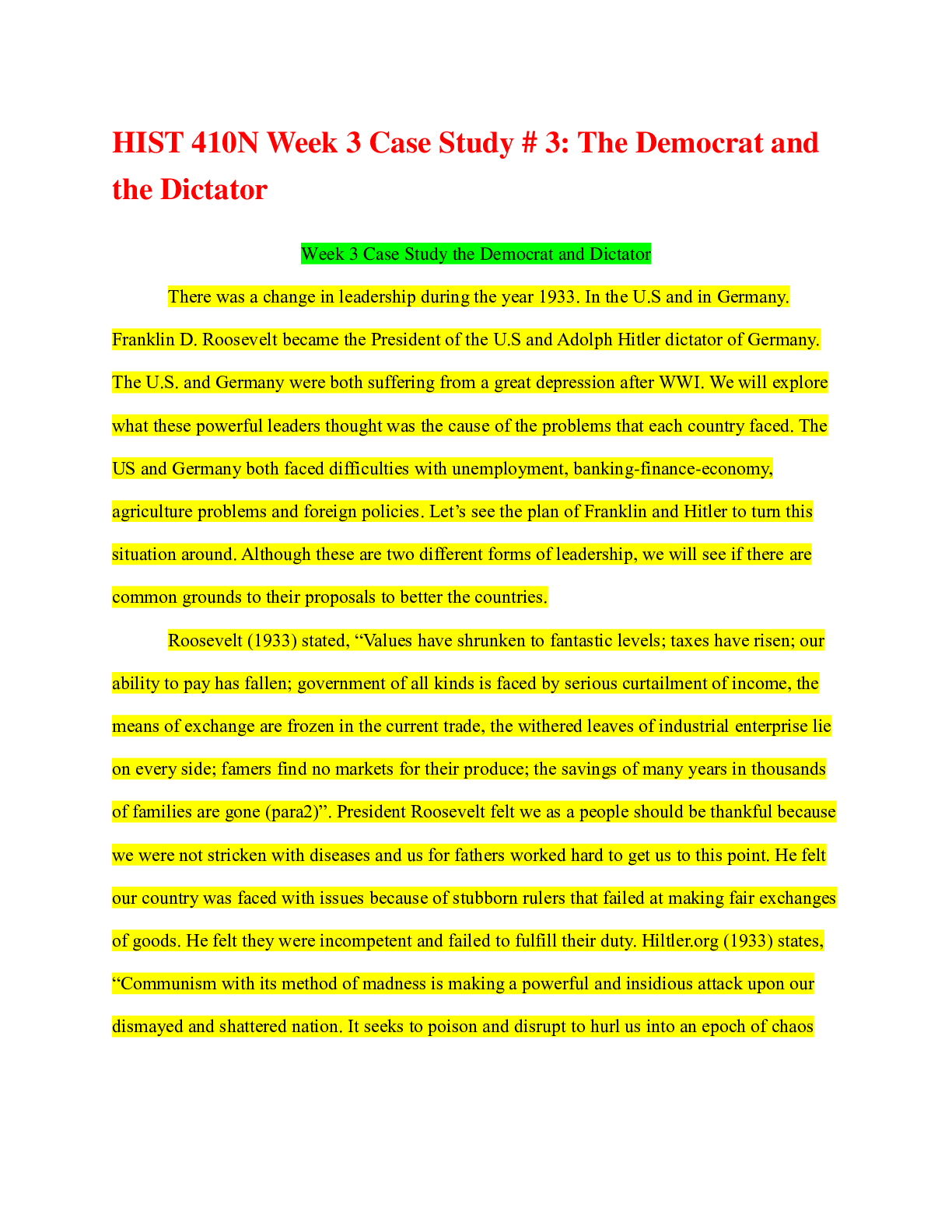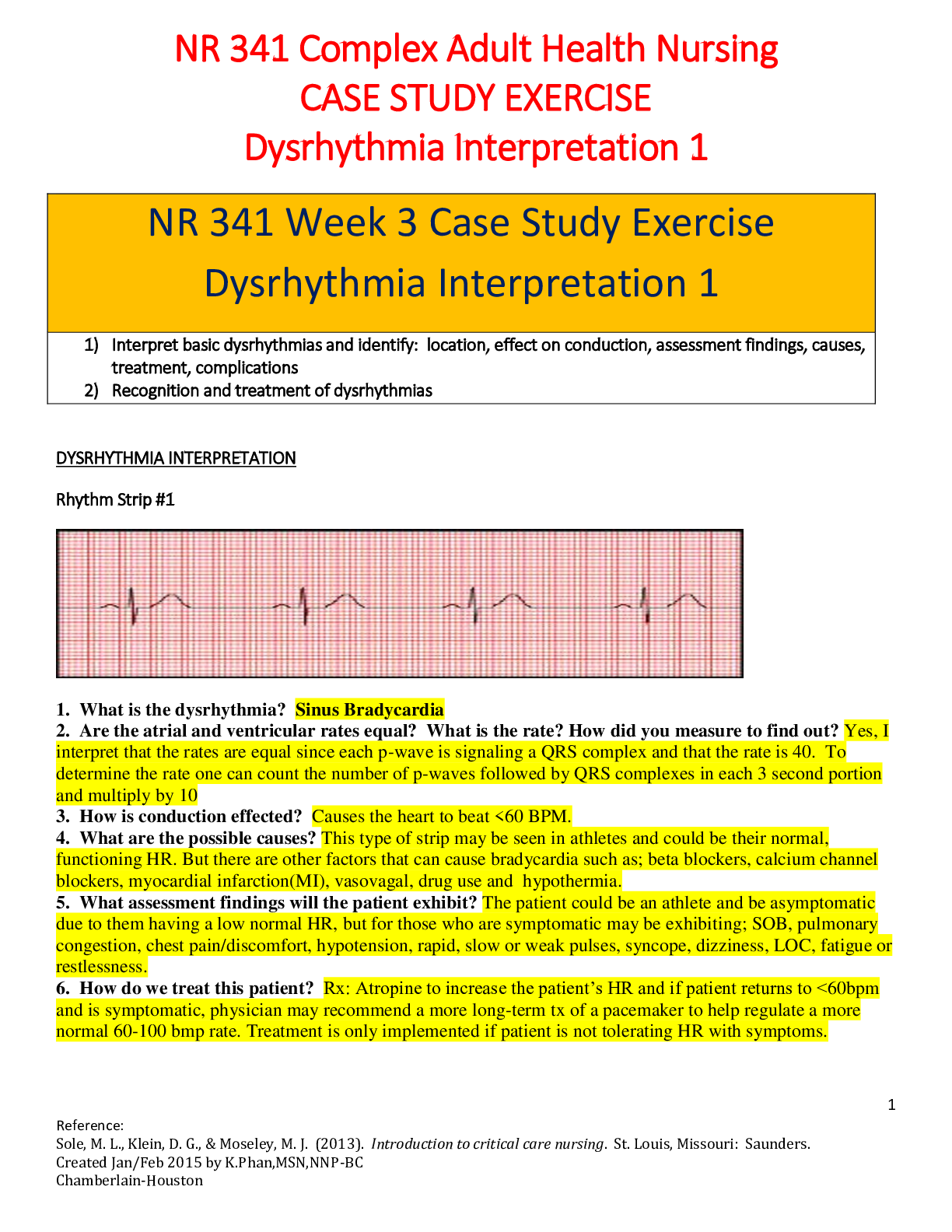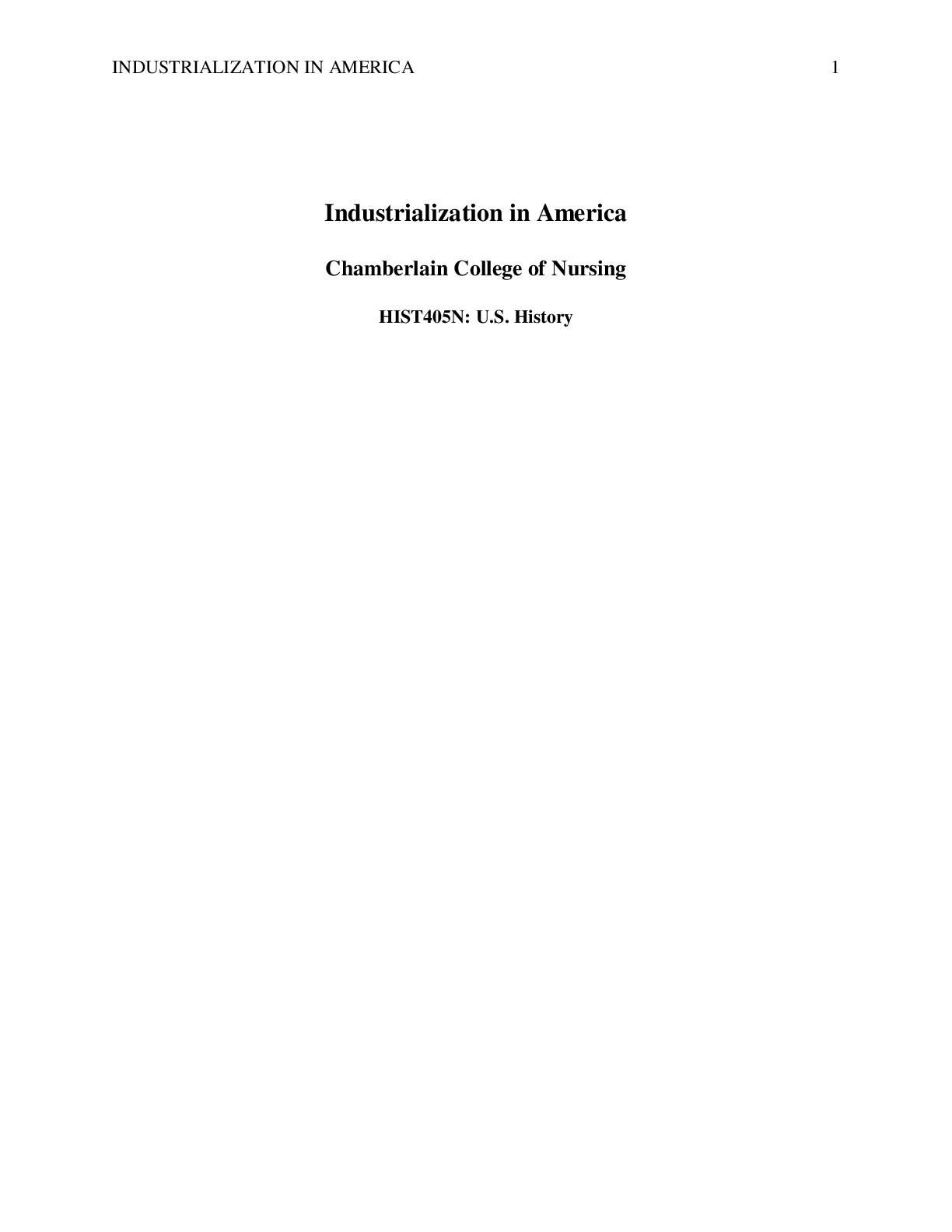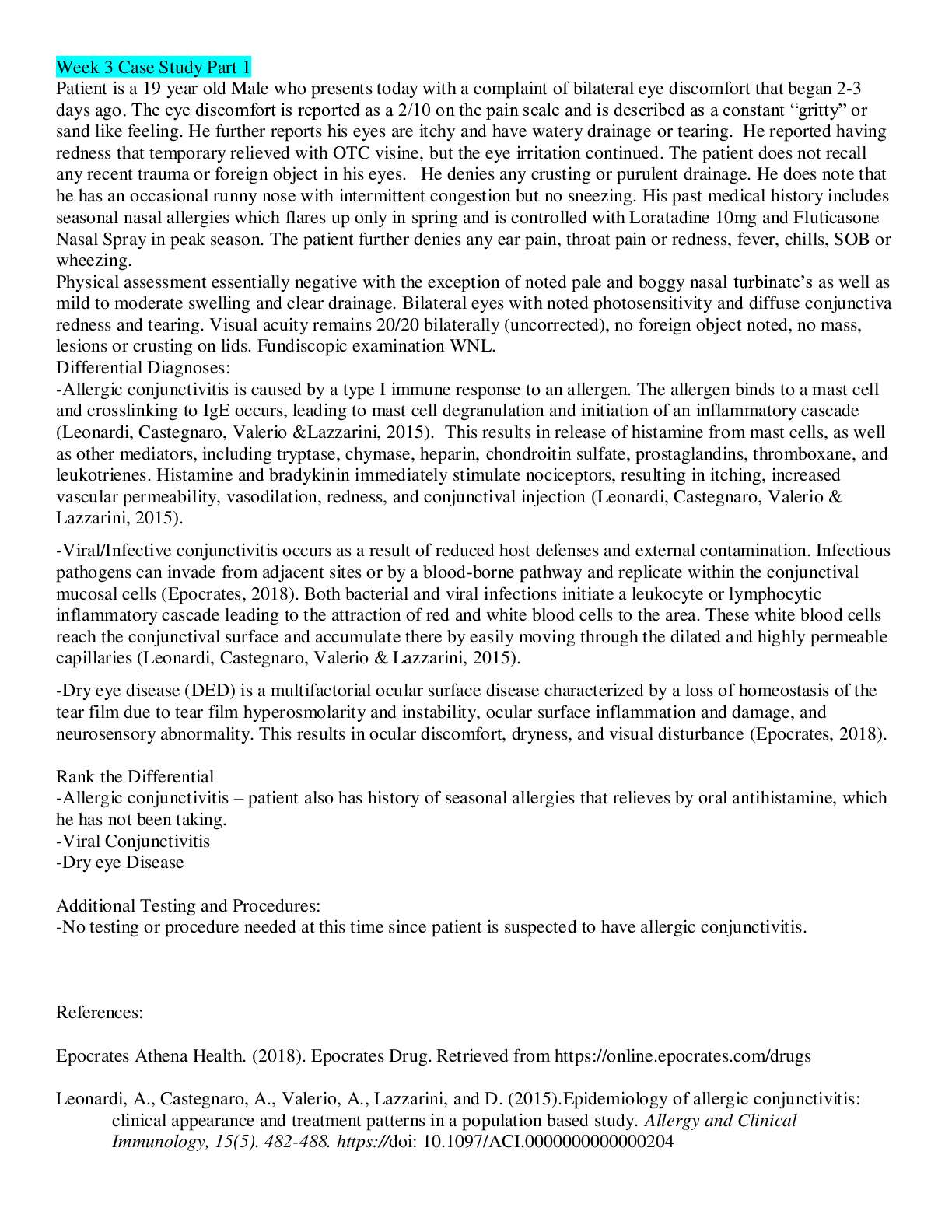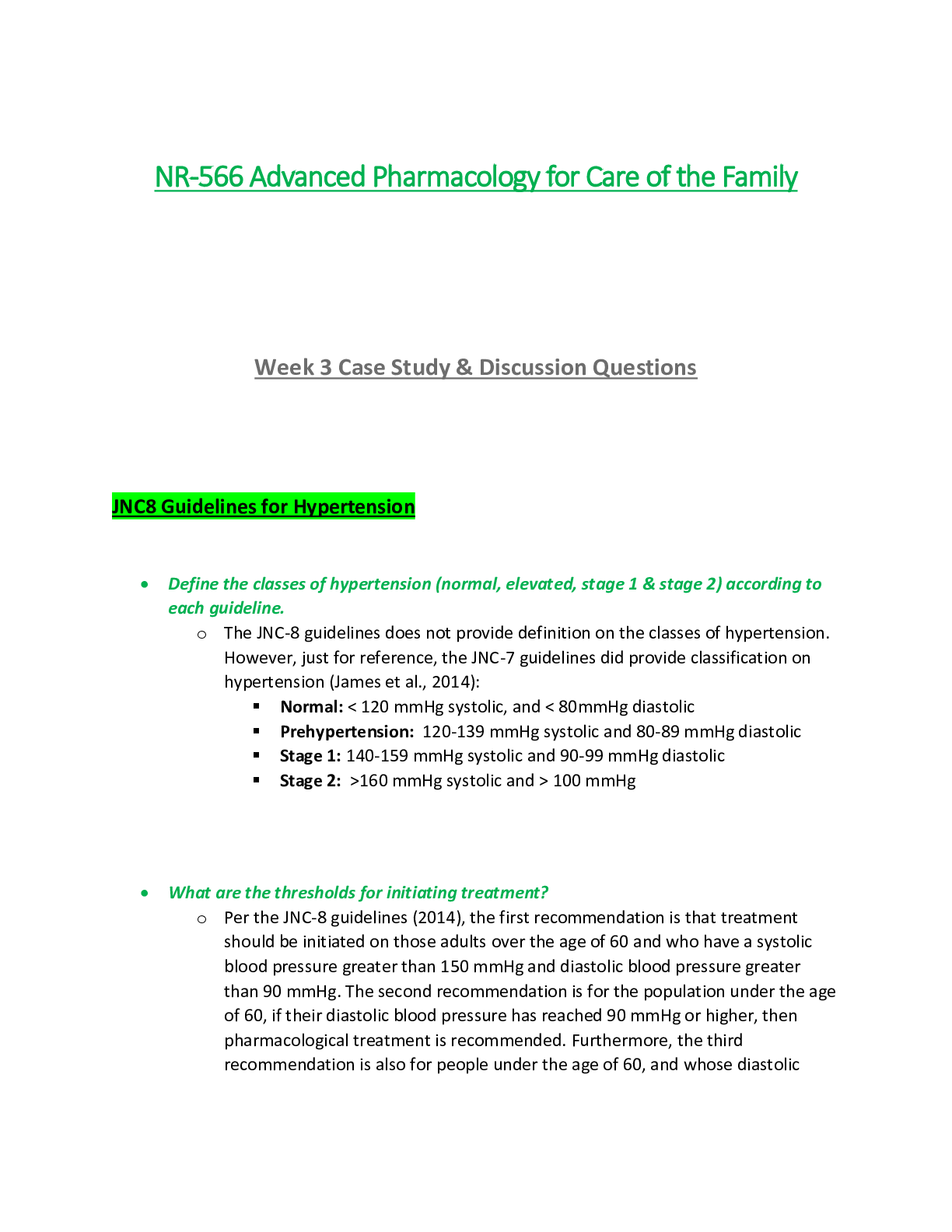AMERICAN HISTORY > CASE STUDY > HIST 405N Week 3 Case Study Assignment Option 3: The Abolitionist Movement – Graded An A+ (All)
HIST 405N Week 3 Case Study Assignment Option 3: The Abolitionist Movement – Graded An A+
Document Content and Description Below
HIST 405N Week 3 Case Study Assignment Option 3: The Abolitionist Movement – Graded An A+ Case Study: The Abolitionist Movement The Abolitionist Movement of the 19th century brought about man... y historical events. It was the movement to end slavery. In this essay I will assess if abolitionists were responsible reformers or irresponsible agitators, explain how abolitionists upheld the Declaration of Independence as the foundation of antislavery and abolitionist thought, assess the effect of the Gag Rule on the Abolitionist Movement, and analyze how the women's rights movement would gain momentum from the antislavery movement. Abolitionist: Reformers or Agitators There are many opinions about Abolitionist and some, such as William Lloyd Garrison, claimed they were agitators and others claimed they were reformers for antislavery. Abolitionist essentially wanted an end to slavery and end it immediately in all states, (Corbett, 2018). They felt slavery was an inexcusable sin and their arguments and position were non-negotiable, (Hammond & Mason, 2011). In this light they can be seen as being irresponsible agitators because they had no solution for the problems completely ending slavery would cause in the Southern states whose economy relied heavily on slave labor. The antislavery reformers, on the other hand, while they also believed slavery was not right, they felt that immediate abolishment was too extreme. “They wanted a more gradual process to keep peace by limiting slavery to the South and not allowing any more slave states in the Union,” (Corbet, 2018). Declaration of Independence The Declaration of Sentiments written by the Antislavery Society, echoed the words of the Declaration of Independence that all men are created equally and have rights for life liberty and the pursuit of happiness, (American Anti-Slavery Society, 1833). They used the Declaration of Independence as their foundation for their Anti-Slavery cause to argue that if all men are equally created and granted rights by the Declaration of Independence, then why were their men being held in captivity and not afforded those same rights? Gag Rule As the Anti-Slavery movement grew, abolitionist began petitioning Congress to address the issue. Slavery in the South was what we would call a "hot button" topic of the time and all the Southern congressman were strongly opposed to it being abolished. As one can imagine, discussions on the topic could tie up the House from getting any other issues addressed. In May of 1836 the House of Representatives passed a resolution that would halt and postpone any discussion of the slavery issue until a later date and in later Congresses it was even strengthened. This became known as the "Gag Rule" and only few congressmen were opposed to it in the beginning. But some saw the gag rule as unconstitutional, going against the first amendment of the bill of rights which was the right to petition the government for grievances (Myers, 2005). John Quincy Adams led a small group of congressmen who felt this way and he would attempt several times to read petitions on the floor but would be immediately "gagged" and not allowed to discuss the topic. This ruling also did little to stop the abolitionist movement and perhaps caused them to redouble their efforts. Between 1837 to 1838 they sent more than 130,000 petitions to Congress to do away with all slavery. As anti-slavery sentiment began to grow other congressman began to support Adams claim that suppressing the right to petition was unconstitutional, the House struck down the gag rule in 1844 (Myers, 2005). Women’s Rights Movement The Women’s Rights Movement was born out of the abolition movement (nps.gov, 2019). A large number of women were part of the Anti-Slavery Movement, until the society split over differing views of women being in leadership positions. Women started to realize the parallels between themselves and slaves and argued that women and men were created equally by God and should be entitled to the same rights (Dudden, 2016). Women learned how to organize, petition and publicly protest for social justice directly from the lessoned learned out of the anti- slavery society. In 1848 the first Women’s Rights Convention was held in Seneca Falls, NY where they proclaimed that women were slaves also (Dudden, 2016). Conclusion It is interesting to see the progression of the anti-slavery movement, how it was handled by our leaders of the time and the affects it had on future movements. While the Abolitionist in their fervor wanted to do away with slavery completely and immediately with seemingly no concern on the economical affects it would have on the country, it did help begin the process. A process based on our Constitutional Law and Bill of Rights and one that while it was temporarily "gagged", was again changed and upheld by the same laws and principles that allow the concerns of a country to be heard. It also taught future movements how to get their voices heard on issues that were important to them. There will always be differing opinions on issues that face the country, but history has shown us that if people can come together with calm, rational and logical thought, there is no issue that cannot be resolved to have the most amicable outcomes for all. References American Anti-Slavery Society. (1833) Declaration of sentiments of the American anti-slavery society. Adopted at the formation of said society, in Philadelphia, on the 4th day of December, New York. Published by the American anti-slavery society, 142 Nassau Street. William S. New York. [pdf] Retrieved from the Library of Congress, https://www.loc.gov/item/rbpe.11801100/. Corbett, P. S. (2018). U.S. history. OpenStax, Rice University. Retrieved from https://cnx.org/contents/[email protected]:gMXC1GEM@7/Introduction Dudden, F. (2016, April 05). Women’s Rights, Abolitionism, and Reform in Antebellum and Gilded Age America. Oxford Research Encyclopedia of American History. Retrieved 21 January 2020, from https://oxfordre.com/americanhistory/view/10.1093/acrefore/9780199329175.001/acrefor e-9780199329175-e-20. Hammond, J. C., & Mason, M. (Eds.). (2011). Contesting slavery : The politics of bondage and freedom in the new american nation. Retrieved from https://ebookcentral-proquest- com.chamberlainuniversity.idm.oclc.org Meyers, D. (2005). And the war came: The slavery quarrel and the American civil war. Retrieved from https://ebookcentral-proquest-com.chamberlainuniversity.idm.oclc.org [Show More]
Last updated: 2 days ago
Preview 3 out of 5 pages
Instant download

Loading document previews ...
Buy this document to get the full access instantly
Instant Download Access after purchase
Add to cartInstant download
Reviews( 0 )
Document information
Connected school, study & course
About the document
Uploaded On
Jun 26, 2024
Number of pages
5
Written in
Additional information
This document has been written for:
Uploaded
Jun 26, 2024
Downloads
0
Views
7

